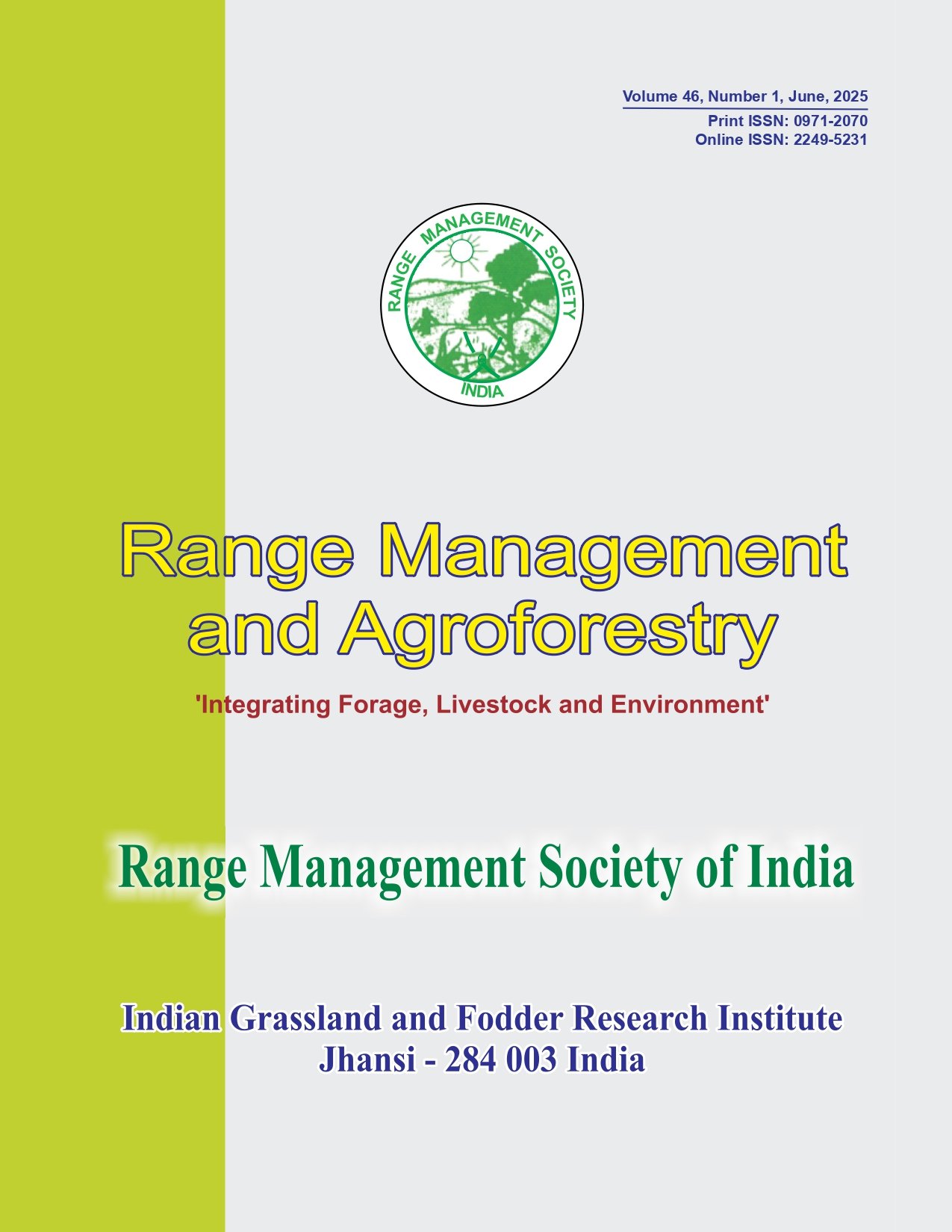Fodder productivity influenced by various grass-legume combinations and planting methods in western Maharashtra
Keywords:
Crop economics, Forage yield, Grass legume combination, Planting methodsAbstract
A field experiment was conducted at Central Research Station of BAIF Development Research Foundation, Urulikanchan, Pune during 2009-12 to study the effect of planting methods and grass legume combinations on fodder productivity. The experiment was conducted in light gravel soil having initial soil status of 0.35 dS/m EC, 7.36 pH and 0.30 per cent organic carbon. There were four combinations of grasses and legume viz. Cenchurus ciliaris + Desmanthus virgatus, Cenchurus ciliaris + Stylosanthus seabrana, Dichanthium annulatum, + Desmanthus virgatus and Dichanthium annulatum + Stylosanthus seabrana in 1:1 proportion planted with two planting methods viz. ridges and furrows, and flat bed. Based on four years pooled data, it was observed that green fodder, dry matter, and crude protein yields (763.1, 165.5 and 18.9 q/ha/year, respectively) were significantly increased due to planting perennial grass and legume combination of Cenchrus ciliaris + Desmanthus virgatus in 1:1 proportion on ridges and furrows. This combination and planting method also had higher net monetary returns of ¹ 55529 ha/year, maize fodder equivalent yield of 308 qha-1 and benefit cost ratio of 2.72. This grass legume production system maintained the soil fertility over a period of field experimentation under rainfed condition of western Maharashtra.




